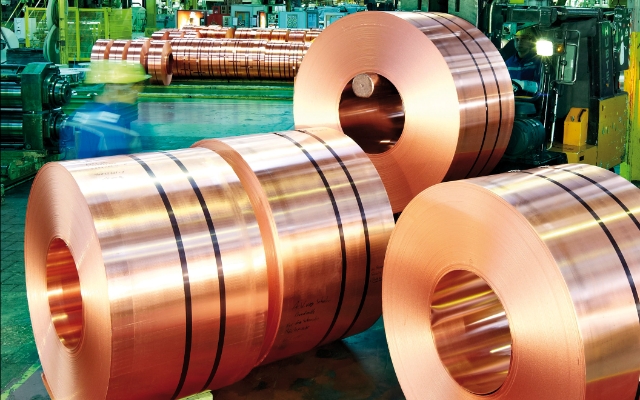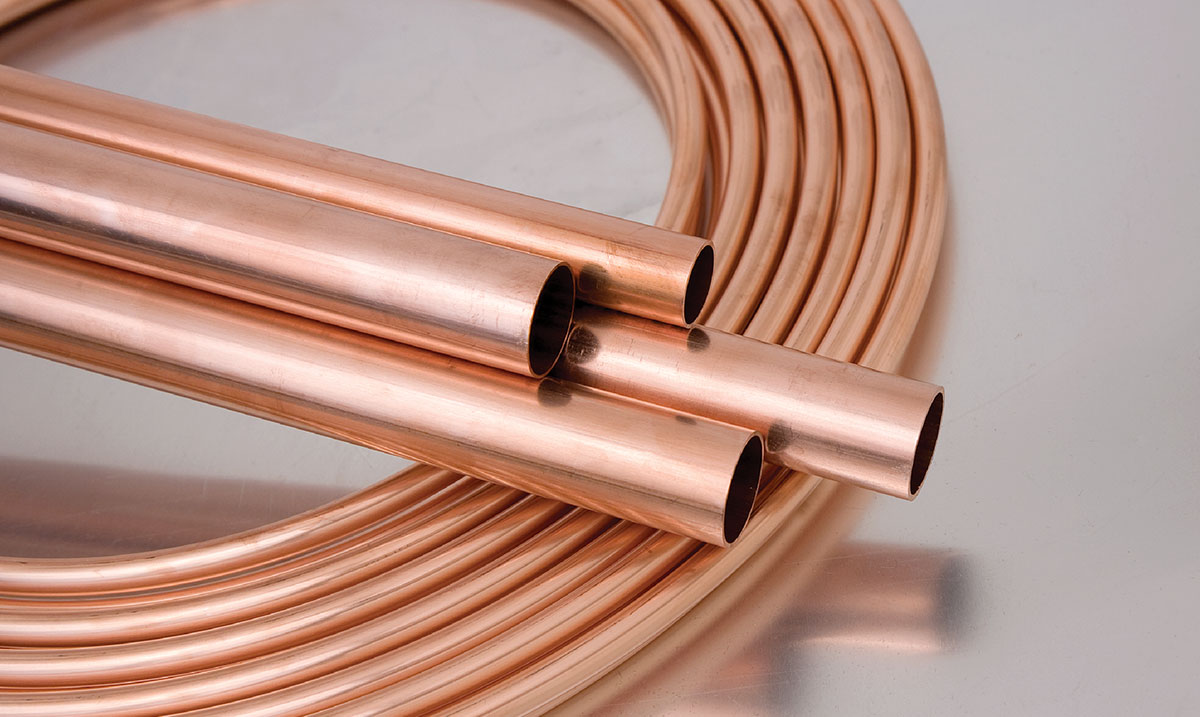Leading Trends in Home Decoration Featuring Elegant and Useful Copper Products
Leading Trends in Home Decoration Featuring Elegant and Useful Copper Products
Blog Article
Exactly How Copper Products Add To Sustainable Practices in Different Sectors
In renewable power systems, for example, copper boosts the functionality of solar and wind innovations, while its application in building and construction decreases waste through long life. As markets seek to embrace even more lasting methods, the role of copper might prove critical in attaining ecological objectives.
Copper in Renewable Resource
Copper plays a vital role in the innovation of renewable resource modern technologies, offering as an essential conductor in various applications. Its extraordinary electrical conductivity and resistance to rust make it a suitable material for electric wiring, which is crucial in solar panels, wind generators, and energy storage systems. In solar photovoltaic or pv systems, copper is used in the affiliations and circuitry, allowing efficient energy conversion from sunshine to power.
In wind energy, copper is indispensable to the generators and transformers that convert kinetic energy into electrical energy, guaranteeing optimum efficiency and integrity. The need for electric automobiles (EVs) is boosting, with copper being an essential element in batteries, motors, and charging facilities. The change to EVs significantly boosts the need for copper, as these cars usually utilize four times much more copper than traditional interior burning engine lorries.
As the globe looks for to minimize environment modification and transition to sustainable power resources, copper's role ends up being significantly critical. The product not just enhances the performance and durability of renewable resource systems but also supports the wider goal of lowering greenhouse gas discharges and advertising a sustainable future.
Eco-Friendly Construction Materials
Over the last few years, there has actually been a remarkable change in the direction of the fostering of eco-friendly building and construction products in action to expanding environmental concerns. This change is encouraged by the demand for lasting options that reduce eco-friendly impacts while preserving structural integrity and visual appeal.
Copper, recognized for its sturdiness and recyclability, has actually emerged as a principal in this field. It can be utilized in roof, plumbing, and electrical systems, adding to energy efficiency and lowering waste. Copper's durability implies less replacements gradually, additional boosting its sustainability profile.
In addition, materials such as bamboo, recovered wood, and reused steel are getting popularity. These alternatives not only supply minimized ecological influence but likewise promote resource preservation. As developing codes significantly highlight sustainability, contractors and architects are integrating these materials into their jobs, fostering development in style.
The raising adoption of green construction products mirrors a more comprehensive commitment to sustainability in the built setting. By focusing on these products, the building market can dramatically lower its carbon impact, straighten with governing standards, and support a much healthier ecosystem for future generations. This trend notes an essential action in the direction of an extra lasting future in building and construction.
Copper's Role in Healthcare
Recent studies have highlighted the considerable function of copper in health care setups, specifically as a result of its antimicrobial properties. Copper surfaces have been revealed to lower the visibility of virus, consisting of microorganisms and infections, by approximately 99.9% within a brief period. This exceptional effectiveness makes copper an important material for high-touch surface areas in hospitals, such as doorknobs, bed rails, and IV posts, thus adding to improved infection control measures.
Along with its direct antimicrobial impacts, published here copper likewise plays a duty in the more comprehensive context of medical facility sustainability (Copper Products). By including copper right into medical tools and home furnishings, healthcare centers can reduce the incidence of healthcare-associated infections (HAIs), which not just enhances person results yet likewise reduces the expenses related to prolonged next healthcare facility remains and added treatments
In addition, copper's toughness and recyclability align with lasting techniques, enabling for responsible resource administration. As health care systems progressively prioritize both individual safety and security and ecological stewardship, the combination of copper products is ending up being a lot more prevalent. This dual advantage underscores copper's important payment to a healthier, more secure, and more lasting medical care atmosphere.
Sustainability in Transportation

Furthermore, copper's sturdiness and rust resistance contribute to the durability of transportation facilities (Copper Products). In rail systems, for circumstances, copper components boost the reliability and efficiency of signaling and power systems, vital for reducing delays and energy intake. In addition, copper's role in renewable resource systems, such as solar and wind, sustains lasting transportation options by supplying clean energy for electrical transportation choices
Investments in copper modern technology not just foster sustainability however additionally boost economic growth and job creation in eco-friendly industries. As industries strive to meet strict environmental regulations, the application of copper items in transportation becomes a critical method in accomplishing sustainability goals and advertising a cleaner, more reliable future.
Copper and Circular Economy
As the globe progressively embraces sustainability, the duty of copper in the round economic situation comes to be ever much more considerable. Copper's intrinsic homes-- such as its conductivity, resilience, and recyclability-- setting it as a key material in a resource-efficient economic climate. The circular economy intends to decrease waste and optimize source use with discover this recycling and reusing materials, and copper excels in this regard.
The steel can be reused indefinitely without loss of top quality, making it a suitable candidate for sustainable methods throughout numerous markets, consisting of construction, electronics, and renewable resource. By recycling and recuperating copper from end-of-life items, industries can considerably minimize the demand for virgin materials, thereby decreasing environmental effects connected with mining and handling.
In addition, the integration of copper into round economic situation structures not only preserves resources but also cultivates innovation. Companies that prioritize copper recycling contribute to a much more lasting supply chain, boosting their competition while straightening with regulative needs and consumer preferences for ecologically accountable items.
Conclusion
To conclude, copper items substantially add to lasting practices throughout several markets. Their important duty in boosting renewable resource modern technologies, advertising environmentally friendly building and construction materials, supporting infection control in healthcare, helping with sustainable transport, and embodying the concepts of a circular economy emphasizes the versatility and relevance of copper. By incorporating copper into numerous applications, industries can accomplish better effectiveness, minimize environmental influence, and align with international sustainability goals, eventually fostering a much more lasting future.

Copper's exceptional conductivity makes it a favored material in electrical automobile (EV) systems, enhancing power effectiveness and performance. Furthermore, copper's duty in sustainable energy systems, such as solar and wind, supports sustainable transportation remedies by offering clean power for electrical transportation alternatives.
Their vital duty in improving renewable power technologies, advertising environmentally friendly building and construction products, sustaining infection control in healthcare, promoting sustainable transportation, and personifying the principles of a round economic situation underscores the convenience and significance of copper.
Report this page